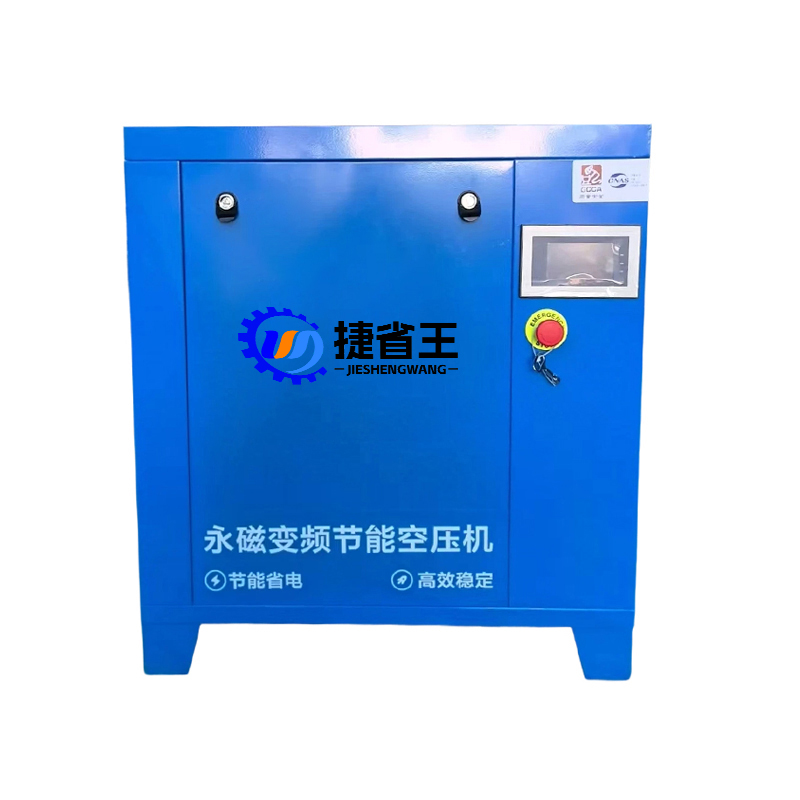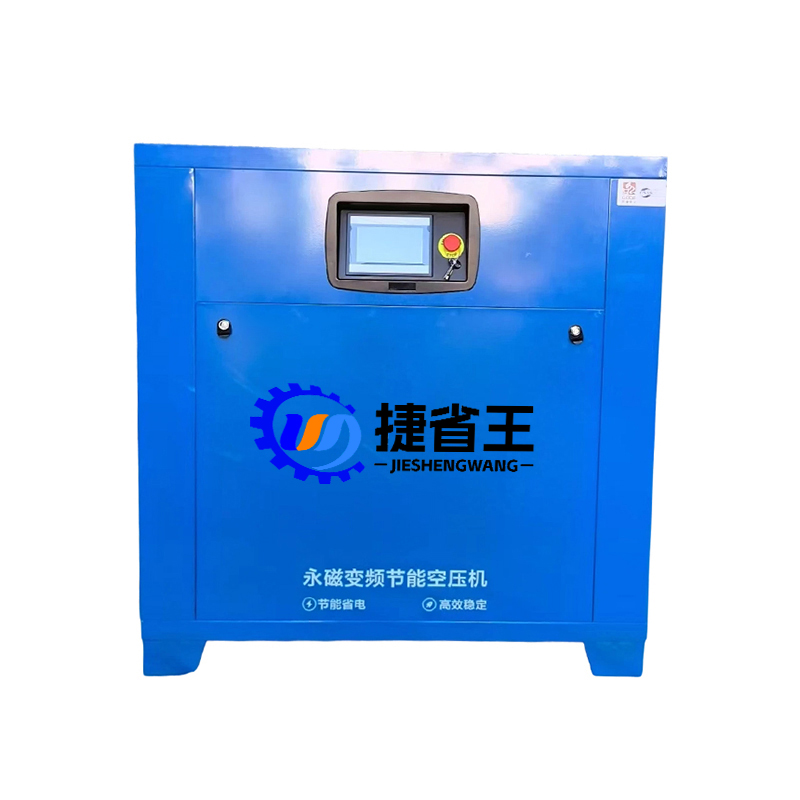How does the heat dissipation design of a permanent magnet variable frequency air compressor cope with high-load continuous operation?
Release Time : 2025-04-17
In industrial production, permanent magnet variable frequency air compressors often need to operate at high load for a long time, which causes the motor, compression chamber and other components to continuously generate a lot of heat. If the heat dissipation is not timely, it will not only lead to a decline in equipment performance, but also may cause serious problems such as permanent magnet demagnetization and mechanical component damage. Therefore, reasonable and efficient heat dissipation design has become the key to ensuring its stable operation.
The performance of the heat dissipation material directly affects the heat dissipation effect. Permanent magnet variable frequency air compressors are mostly made of aluminum alloys with excellent thermal conductivity. They have high thermal conductivity and can quickly transfer heat to the surface. At the same time, in order to further improve the heat dissipation efficiency, some products will also perform special treatments on the surface of the radiator, such as anodizing, to increase its surface area and heat radiation capacity. In addition, between the heat-generating components and the radiator, thermal grease or thermal pads will be used to fill the tiny gap to reduce thermal resistance and make heat conduction smoother, laying a material foundation for coping with high-load operation.
Optimized heat dissipation structure is an important means to cope with high-load operation. On the one hand, the large-size, multi-fin radiator design greatly increases the contact area with the air and improves the natural convection heat dissipation efficiency. On the other hand, the air duct is reasonably arranged, and the air flow is guided by the guide plate so that the cold air can fully flow through the heat-generating components and take away the heat. Some air compressors also use a split heat dissipation structure to dissipate heat separately from different heat-generating units such as motors and electronic control systems to avoid heat superposition and effectively reduce the overall temperature of the equipment.
The intelligent temperature-controlled cooling fan system provides dynamic protection for heat dissipation. The air compressor has a built-in temperature sensor to monitor the temperature of key parts in real time. When the temperature is low, the fan runs at a low speed or stops to reduce energy consumption and noise; as the temperature rises, the fan gradually increases the speed according to the preset program to enhance the forced convection heat dissipation capacity. For example, when the motor temperature reaches 60℃, the fan speed increases to 50%; when the temperature rises to 70℃, it runs at full speed to ensure that the heat can be dissipated in time during high-load operation to maintain the temperature of the equipment stable.
For harsh working conditions with high-load continuous operation, liquid cooling auxiliary heat dissipation technology plays an important role. The liquid cooling system takes away the heat of high-temperature components such as the compression chamber and motor through the circulation of coolant in a closed pipeline, and then dissipates the heat into the air through the radiator. Compared with air cooling, liquid cooling has higher heat dissipation efficiency and can more accurately control the temperature of key components to avoid local overheating. Some high-end permanent magnet variable frequency air compressors also use oil cooling technology, which uses lubricating oil to circulate in the system, which not only plays a lubricating role but also takes away heat, achieving dual functions and ensuring the stable operation of the equipment under extreme working conditions.
Good maintenance and monitoring are the key to ensuring the continued effectiveness of the cooling system. The air compressor is equipped with dust-proof devices such as filters to prevent dust accumulation from affecting the cooling efficiency, and remind users to clean or replace the filters regularly. At the same time, the intelligent control system can monitor the operating status of the cooling system in real time. Once abnormal conditions such as fan failure and coolant leakage are found, an alarm will be immediately issued and corresponding measures will be taken, such as reducing the operating load to avoid equipment damage due to cooling system failure, and ensure the safety of high-load continuous operation.
The permanent magnet variable frequency air compressor has formed a complete and effective cooling solution through high-efficiency heat dissipation materials, optimized heat dissipation structure, intelligent temperature control fan system, liquid cooling auxiliary heat dissipation technology and a complete maintenance and monitoring system. These measures work together to effectively deal with the heat generated by continuous high-load operation, ensure stable operation of equipment, extend service life, and meet the needs of industrial production for efficient and reliable operation of air compressors.






